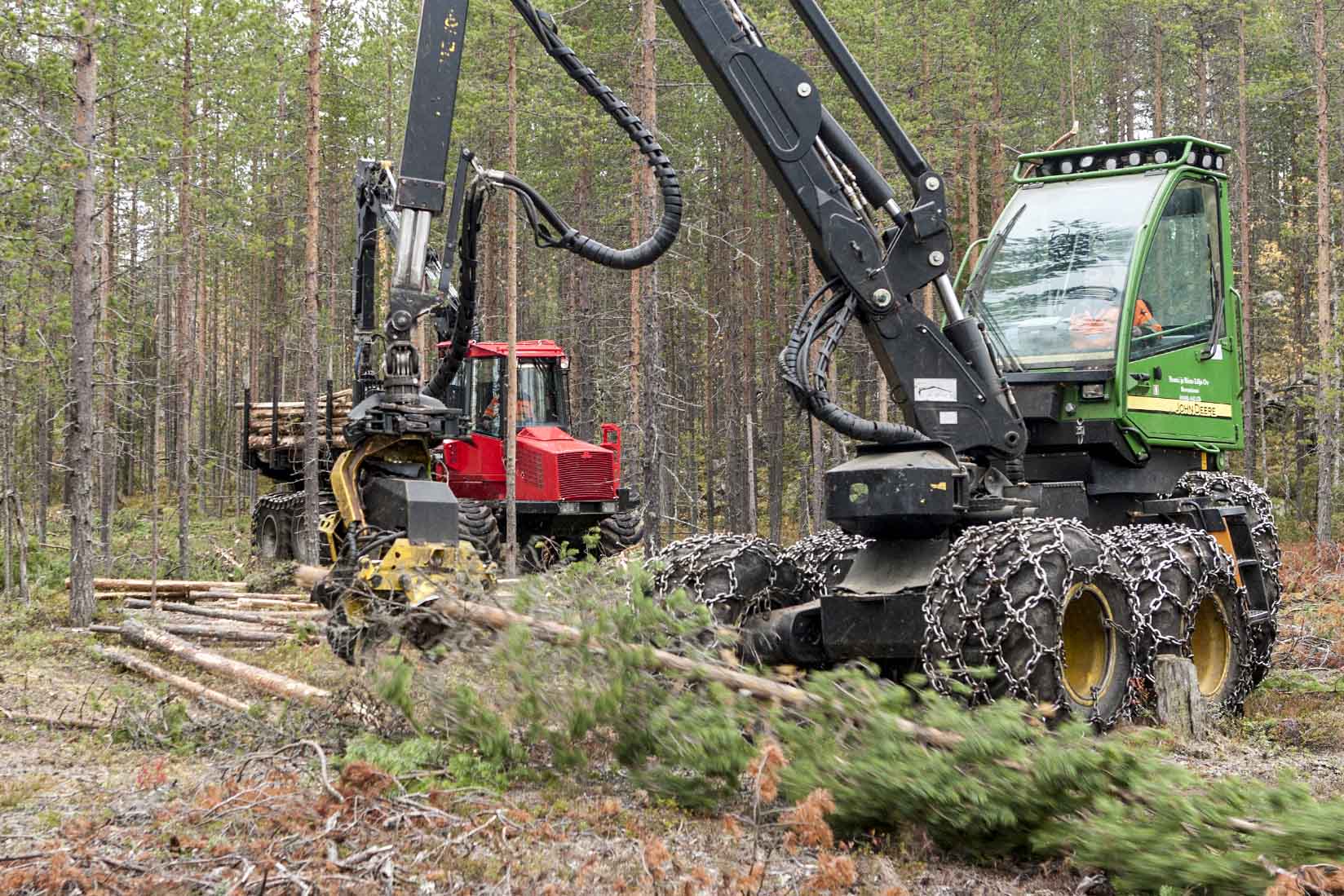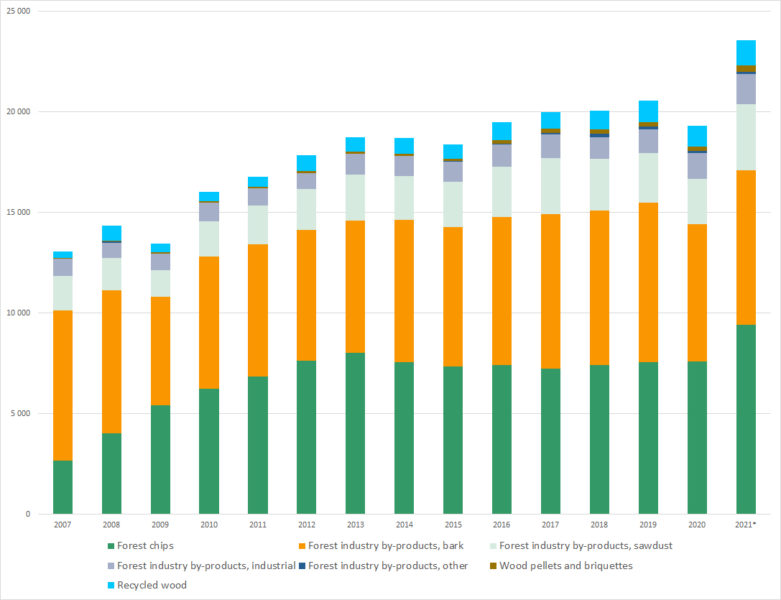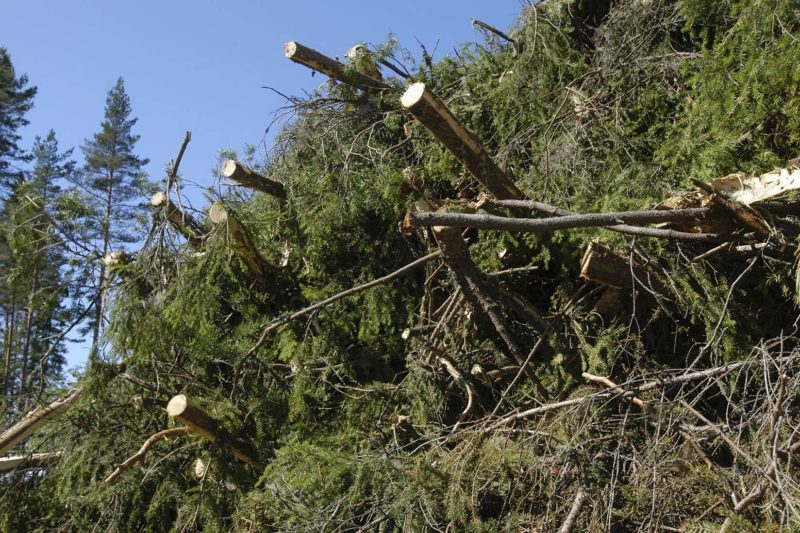
Expert says there is enough raw material in forests to meet the demands of energy production and forest industry, but harvesting energy wood profitably will be a problem.
“Security of supply will be at stake unless we can get the timber out of the forest,” warns Kyösti Turkia, expert on bioenergy and bioeconomy at the Finnish Forest Centre.
Russia’s attack on Ukraine has repercussions on the Finnish forest sector. Imports of conifer roundwood from Russia stopped due to Russia’s export duty even before the attack. The imports of Russian energy wood chips used by district heating plants came to an abrupt end in February.

The new situation moves the focus of energy wood procurement on to young forests in need of tending. Over half of the forest-based energy in Finland is derived from small-diameter wood harvested when thinning young stands.
“There’s a substantial energy reserve in forests that require thinning,” says Turkia.
“We need to get a move on with felling and procurement in Finland, and to figure out how to focus the fellings on sites in urgent need of thinning, for it’s there that we have a lot of felling potential at the moment.”
Tending of young stands has been neglected
According to the 12th National Forest Inventory, there are 800,000 hectares of forest in Finland where tending of young stands has been neglected.
“Of this, 460,000 hectares are in forests where it would be sensible to harvest energy wood. That’s a lot of hectares, and there’s a lot of timber there to be thinned,” Turkia says.
There are also 900,000 hectares of forests in Finland in need of urgent first thinning. In some of these, too, harvesting energy wood is a sensible option, though a first thinning also yields fibrewood and even smaller logs.

“Forests should be tended effectively even if tending at the sapling stage has been delayed. We need to diversify the methods of tending young stands and to develop harvesting practices. If we can resolve these challenges, there will be plenty of raw material.”
The Finnish Forest Centre advises that early tending should be carried out in stands with a maximum height of three metres.
In 2020, the number of hectares in private ownership that received support for early tending on the basis of the Act on the Financing of Sustainable Forestry was close to 42,000, while the target is close to 70,000 hectares per year.
Location of energy wood sites is known
Neglecting the timely tending of young stands produces small-diameter wood instead of stout logs. The forest resource data generated by the Finnish Forest Centre shows map locations of sites where energy wood is available. The service is freely accessible to all.
“We do know where tending operations have not been carried out and where energy wood might be available.”
Timber buyers and procurement organizations may put in a request for contact data and thus find out who owns the forest. The data is available on the basis of the Forest Information Act.
This is the right time to undertake thinnings that have been delayed and to make a deal on your timber.
Forest owners have been encouraged to undertake thinnings by, for example, the forest company Stora Enso in a media release last week. The company stressed that thinnings are a source of fibrewood in particular.
“This is the right time to undertake thinnings that have been delayed and to make a deal on your timber. This will ensure the wood supply of mills in Finland and keep them up and running” said Janne Partanen, SVP, Head of Wood Supply Finland, in Stora Enso’s media release.
As the consumption of wood by the forest, wood product and sawmill industries goes up, the availability of sidestreams suitable for the production of wood-based energy, such as black liquor, also increases.
“Sixty percent of the solid wood fuel used for energy comes from industrial sidestreams. Forty percent of wood-based energy must be harvested directly from forests, and that is the most expensive share of forest energy,” says Turkia.
EU regulation stresses the cascade principle; in other words, wood should primarily be processed for high-value uses and only used as energy after that.
“The direction favoured in the regulation is to use forestry sidestreams for energy,” says Turkia.
Logistics chains require streamlining – better subsidies are needed
Turkia considers that tending young forests and harvesting small-diameter wood on market terms has been a challenge. The factor deciding where to harvest energy wood is the cost. The most profitable grade to harvest is fibrewood, and the price of energy wood will increase hand in hand with demand.
Turkia thinks that extending the availability of state aid to sustainable forestry should be re-assessed in light of the new demand situation. However, this aid alone will not be sufficient to speed up the procurement of energy wood.
We must be able to improve the quality of harvesting to keep the forest owners happy.
According to Turkia, the essential thing now would be to ensure a smooth logistics chain for energy wood. Bioterminals for storing the raw material are needed at heating plants. There is also a need for harvester operators skilled in work with young forests.
“We must be able to improve the quality of harvesting to keep the forest owners happy. The list of challenges related to increasing the procurement of energy wood is not difficult to make,” says Turkia.
Turkia points out that all actors in the energy wood value chain must derive profit, and this includes those who do the actual harvesting. These entrepreneurs suffer from high harvesting costs and poor profitability, even though energy wood procured directly from a forest is the most expensive of its kind.
Fuel prices have gone up drastically. The price of light fuel oil has doubled in about two years, and that of diesel has gone up by 70 percent.
’Ultimately, those who buy district heat may have to pay a bit more to ensure security of supply.’
Demands by EU increase importance of wood-based energy
How will eventual new environmental goals of the EU affect the situation?
“In the current crisis, Finland’s security of supply has become an issue not to be ignored despite climate goals. Peat will be phased out more slowly, if and when we want to provide heat for homes. The situation has changed quite suddenly and there is great uncertainty,” Turkia says.

Turkia predicts that forest-based wood energy will gain more importance in the EU’s energy goals and that the share of renewable energy will increase in Finland. Over 70 percent of the renewable energy in Finland is now generated with wood-based fuels.
Meanwhile, EU steering and regulation on the use of forests is becoming stricter. The EU is preparing sustainability directives which are affected by a concern over the loss of biodiversity
The impact of future EU legislation and sustainability criteria on the future potential of using forest energy must be assessed, says Turkia.
“So far, Finland doesn’t have detailed information on the content of the taxonomy, the biodiversity strategy and the biodiversity criteria. They’re all of them only being formulated.”
Turkia points out that ecological sustainability can also be safeguarded in harvesting, provided that forest management recommendations and the criteria of forest certification are adhered to.
“Biodiversity will be taken into account just as it is in other harvesting operations.”
English translation: Heli Mäntyranta
